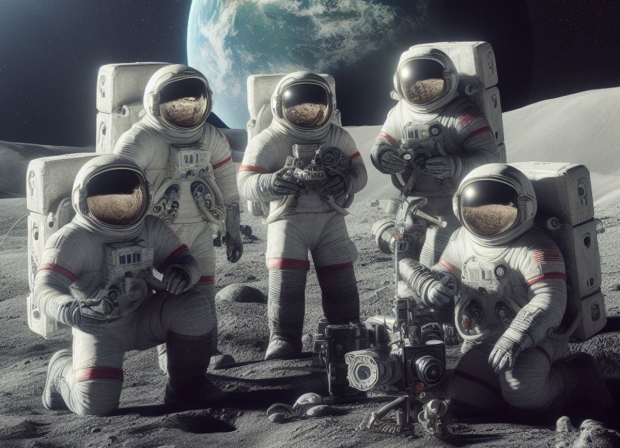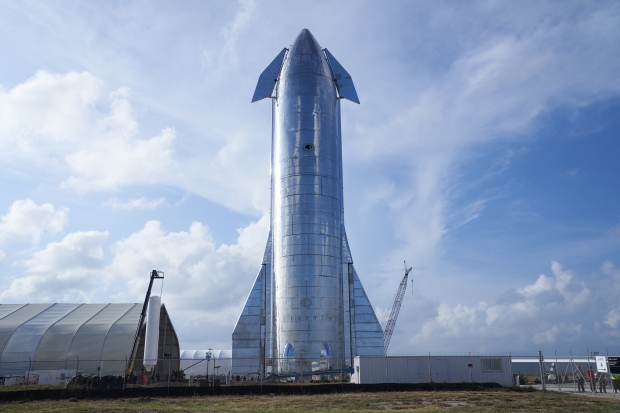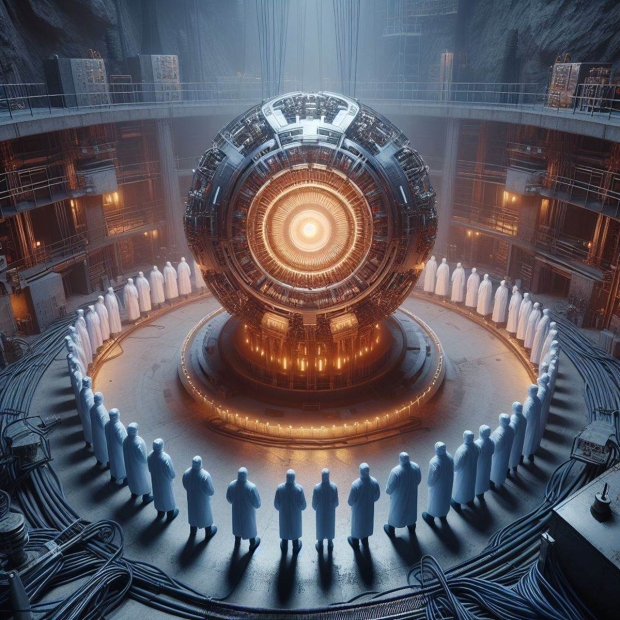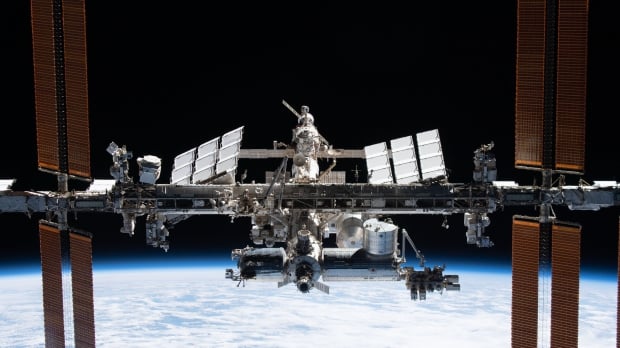Science, Space, Health & Robotics News - Page 8
NASA selects what camera astronauts will use to photograph the Moon's surface
NASA has announced via its blog which camera company it will be working with to develop a bespoke camera designed for astronauts exploring the lunar surface.
The space agency took to its blog on its website on February 29 and announced that it will be working with Nikon to develop a handheld camera capable of operating at a high level in the harsh lunar environment.
The camera is expected to be taken to the lunar surface as part of NASA's scientific objectives with Artemis III, which includes a destination to the lunar South Pole region. According to the update, NASA's Marshall Space Flight Center, located in Huntsville, Alabama, recently created a prototype camera called the Handheld Universal Lunar Camera (HULC).
Scientists respond to concerns of 1,200-foot-wide asteroid hitting Earth in 2029
An asteroid that has been a somewhat point of contention for several years has received another analysis further putting to bed the concern of a potential collision with Earth.
That asteroid is 99942 Apophis, which was originally discovered on June 19, 2004 and only a few months after its discovery caused a brief period of concern as observations indicated with probability of up to 2.7% of a potential collision with Earth on April 13, 2029. However, follow-up observations ruled out this possibility, with the probability of a collision being so small that the 1,200-foot-wide asteroid wasn't worth worrying about.
What researchers didn't take into account at the time was the possibility of Apophis colliding with another asteroid, slightly, or greatly, changing its trajectory and therefore the probability of a collision with Earth. Astronomers took observations of the asteroid once again, implemented the chance of an asteroid collision mid-journey and published their findings in the Planetary Science Journal. The team found Apophis has no risk of collision with any known asteroids within the inner solar system.
SpaceX teases date for the next Starship orbital launch attempt
Elon Musk's SpaceX has taken to its official X account to tease the scheduled date for the highly anticipated third orbital launch attempt for its Starship launch vehicle, the world's largest and most powerful rocket ever taken to the skies.
SpaceX took to its official X account on Wednesday to announce that Starship could be taking to the skies once again as soon as March 14. So, what is preventing the next Starship launch? The Federal Aviation Administration (FAA) has to sign off on the next Starship launch after conducting a thorough investigation of the last launch, any design changes made to the rocket as a result of the last launch, and any changes made to the Starbase facility located in southwest Texas.
Despite SpaceX having yet to receive approval from the FAA, the company appears to be expecting the green light very soon since the date of March 14 has been publicly stated. Notably, the FAA completed its investigation into SpaceX's second orbital test flight and found the company had to complete 17 "corrective actions" before it would be issued another launch license.
Continue reading: SpaceX teases date for the next Starship orbital launch attempt (full post)
Scientists take milestone step toward creating an artificial Sun
A new type of magnet developed by researchers at the Plasma Science and Fusion Center (PSFC) at MIT may get scientists one step closer to achieving sustainable nuclear fusion.
The creation of this new magnet has been detailed in several papers and, according to reports, will get researchers closer to unlocking the power of nuclear fusion or emulating the reaction that takes place on the Sun. If this is achieved, it would create a sustainable, limitless, clean energy source for all of humanity and remove the reliance on fossil fuels that damage the environment. While that all sounds like sunshine and rainbows, achieving nuclear fusion and maintaining the reaction long enough to harvest energy has proven extremely challenging.
Enter the new magnets. For an artificial Sun to be created, the nuclear fusion reaction needs to be held in place, and to do that, magnets are used. Unfortunately, researchers have only been able to maintain the reaction long enough to get a net energy gain or extract more energy than they are putting in to make the reaction occur. However, newly designed magnets made from rare-earth barium copper oxide (REBCO) may be the answer, as they come with many advantages compared to the magnets currently being used.
Continue reading: Scientists take milestone step toward creating an artificial Sun (full post)
Scientists unveil how dairy waste can extract 22-carat gold from motherboards
A team of scientists have penned a new study that details an interesting way to collect valuable minerals from electronic waste, and the method includes creating a sponge from dairy waste.
The sponge has been detailed in a research article published in Advanced Materials, where the team explains this method is capable of retrieving $50 worth of gold for every dollar spent on the recycling process of e-waste.
So, how was this sponge created? The researchers looked at the process of making cheese and, in particular, amyloid nanofibrils. First, the team denatures the dairy proteins by heating the whey in an acid bath, which forms the amyloid nanofibrils that are then used to create the sponge. The electronic components are then melted down in the acid, which then creates a solution that is rich in gold and copper.
Elon Musk sued for $128 million by former Twitter executives
Four former Twitter executives have filed a lawsuit against X owner Elon Musk, claiming they haven't received the appropriate severance package following their departure from the company.
The four former Twitter executives are former CEO Parag Agrawal, former CFO Ned Segal, former chief legal officer Vijaya Gadde, and former general counsel Sean Edgett, who were all fired following Musk's takeover of the company in late 2022. The Wall Street Journal has reported Musk says he fired the former C-Suite executives with cause, meaning he doesn't have to pay them any severance.
But the recent lawsuit states that Musk fast-tracked the acquisition of Twitter (now X) precisely to fire Agrawal and other C-Suite executives so there would be cause and so they couldn't cash their lucrative stock options, hence the now $128 million suit. This isn't the only lawsuit Musk has faced over severance packages as six former senior managers at Twitter are also suing the company over severance pay, while Agrawal, Segal, and Gadde filed for a $1 million lawsuit against X, claiming the company owed them for legal fees related to their separation at the company.
Continue reading: Elon Musk sued for $128 million by former Twitter executives (full post)
Northern Lights spotted in UK with a strong colorful display following 'red alert'
There is an increased chance of spotting auroras this year and early next year as the Sun reaches the peak of its 11-year solar cycle.
Phenomena commonly referred to as the Northern or Southern Lights are caused by activity on the Sun, specifically what researchers call Coronal Mass Ejections (CME). This event on the surface of the Sun is a massive ejection of plasma or charged particles that, when lined up with Earth and collide with our planet, charge the particles in the upper atmosphere, specifically oxygen and nitrogen, and create the incredible colors we see from the surface.
As the Sun approaches the peak of its 11-year solar cycle, the activity of our host star increases, and thus, the frequency of these CMEs. For skywatchers, this is also the peak time to get a camera out and head to an appropriate location to catch the light show. Residents across the United Kingdom were lucky enough to see the impact of the Sun on Sunday following AuroraWatchUK issuing a "red alert" at around 17:00 GMT for an increase in solar activity.
New iPhone app built with ChatGPT shows you the exact center of our galaxy
Your smartphone now has the ability to tell you exactly where the center of the Milky Way is, and the app that is free to download was made using OpenAI's ChatGPT.
The free app is called Galactic Compass and was developed by Matthew Webb. Galactic Compass was released on the App Store on February 15 and is specifically designed to inform users that download it where the center of our Milky Way galaxy is. The app, while being quite rudimentary, features a simple green arrow that points in the direction of the galactic center. All users need to do is open up the app, accept the location tracking, and then place their iPhone down on a flat surface. Once that is done, a large green arrow will appear and point in the direction of the galactic center.
Notably, at the center of the Milky Way galaxy is a supermassive black hole called Sagittarius A*. For those that don't know, Sagittarius A* is estimated to have a mass millions of times that of our Sun, with researchers purposing the supermassive blackhole was created through the combination of multiple smaller black holes all merging into one supermassive black hole. Furthermore, Sagittarius A* was photographed on May 12, 2022, by the Event Horizon Telescope. The image that was captured is shown above.
Scientist explains why alien civilizations may be trapped on their home worlds
A theory by astrophysicist Frank Drake has been revisited by researchers who are now saying perhaps Drake didn't take his theory far enough.
Frank Drake's theory, called the "Drake equation," explored the possible reasons why Earth has been contacted or discovered any evidence of alien life. The equation takes many factors into account, such as the discovered number of star systems, planets orbiting those stars, the rate of star formation, and the percentage of planets that would have the necessary conditions for life to exist for a prolonged amount of time.
However, a new study published in the Journal of the British Interplanetary Society penned by Elio Quiroga Rodríguez, a professor at the Universidad del Atlántico Medio in Spain, took the Drake equation and said that two possibilities should be included. The first is alien civilizations on planets that are larger than Earth, which would require more thrust to leave the gravitational pull of the planet.
NASA confirms the ISS is suffering from an air leak in a life support module
On Wednesday, Roscosmos, the Russian equivalent to NASA, announced that a module aboard the International Space Station (ISS), one of the last cooperative efforts between the United States and Russia, is suffering from an air leak.
NASA ISS Program Manager Joe Mantalbano backed up the claims from Roscosmos on the same day as Russia's announcement, as Mantalbano confirmed Russia's Zvezda life support module is suffering from an air leak. Montalbano spoke at a press briefing for the new Crew-8 mission and explained that NASA and Roscosmos were working together to remedy the issue while also stating the leak wasn't affecting crew safety or impacting the Crew-8 mission.
Notably, this air leak was first discovered in August 2020 and was temporarily patched up. However, another leak spot was discovered by Russian cosmonaut Pyotr Dybrov, which indicates how the ISS is nearing its end of life. More specifically, Russia announced in January 2022 that the air leak in Zvezda was going to be fixed, but it appears, judging from both space agencies' announcements, that the problem has re-emerged.











